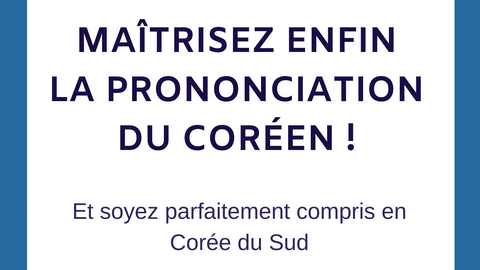Cours de coréen ᚛ Level 1 - My First Steps in Korean (Lessons 1 to 30) ᚛ Leçon 18 - The Topic Particle in Korean [은 / 는]
The Topic Particle in Korean [은 / 는]
Let’s take our first steps into the wonderful world of particles!
The particle 은 / 는 is used to indicate what is called “the topic of the sentence”. The topic of a sentence is different from the subject, as we will see. This notion doesn’t exist in English, but we will need to get used to it in Korean.
What is the topic of a sentence?
The topic of a sentence is simply the subject of discussion. If we are talking about cars, then the topic is “cars”. If we are talking about Jungkook, then the topic is “Jungkook”. There is no similar grammatical function in English. To translate the particle, you could use the expression “with regard to…”.
- Regarding cars…
- Regarding Jungkook…
In English translations, it is true that the topic in Korean can become the subject of the verb. But beware, this is not always the case!
I like apples.
Regarding “I”, I like apples.
- In English, the topic and the subject are the same here, it is “I”. The sentence is about “I” and the subject of the verb “to like” is “I”.
Apples, I love them.
Regarding “apples”, i like them.
- Here, the topic of the sentence is “apples”, we want to talk about apples, this is the topic of our discussion. But the subject of the verb “to like” is “I”. So, the topic and the subject are different!
Using the 은 / 는 particle
Like all particles, 은 and 는 go just after the noun phrase they correspond to, with no space. 은 is used after a consonant while 는 is used after a vowel, as follows:
- If the noun phrase ends in a vowel: [Topic]는
- If the noun phrase ends in a consonant: [Topic]은
나는 먹어.
Breaking down the sentence:
는 indicates the topic of the sentence, which is
나 (= me, I (casual style)).
먹어 comes from the verb
먹다 (= to eat), conjugated in the casual present tense.
So, if we have to form the sentence in English, we get:
→ Regarding “I”, I eat.
Which can be translated more simply to:
→ I eat.
Note that in casual style, "I" is said 나 while it's said 저 in polite and formal styles.
바나나는 비싸요.
Breaking down the sentence:
- 는 indicates the topic of the sentence, which is 바나나 (= bananas).
- 비싸요 comes from the verb 비싸다 (= to be expensive), conjugated in the polite present tense.
So, if we have to form the sentence in English, we get:
→ Regarding “bananas”, they are expensive.
Which can be translated more simply to:
→ Bananas are expensive.
Note: after someone's name that ends in a consonant, we do not add 은 but 이는.
- 지민 → 지민이는
- 정국 → 정국이는
Examples of using the topic particle
En savoir +
There is not always a topic!
The topic of the sentence is an invitation to talk about something that is determined at the beginning of the conversation. This topic does not need to be repeated in every sentence if the people participating in the conversation know the topic.
바나나는 비싸요.
바나나는 맛있어요.
바나나는 노란색이에요.
사과는 싸요.
사과는 빨간색이에요.
Bananas are expensive.
Bananas are good.
Bananas are yellow.
Apples are cheap.
Apples are red.
Even in English, repetition in spoken language is really unnatural. So once the topic of “bananas” has been established, all sentences will refer to this topic until someone changes the topic of conversation, for example to talk about apples.
So, the preceding group of sentences simply becomes:
바나나는 비싸요.
맛있어요.
노란색이에요.
사과는 싸요.
빨간색이에요.
Bananas are expensive.
They are good.
They are yellow.
Apples are cheap.
They are red.
Finally, we use 는 only when necessary and when the topic of the conversation has changed.
Omission of the particle
In everyday conversations, the particle 은 / 는 is usually omitted in order to simplify sentences if there is no ambiguity as to the nature of the noun phrase preceding it. Generally, these are short sentences with no ambiguity.
나는 배고파. can be shortened to
나 배고파.
→ I am hungry.
If you have any hesitation, you should keep the particle to begin with. With experience, you will know which situation the particle can be omitted to speak more fluently.
Exercises
En savoir +
N'est-il pas frustrant d'arriver en Corée du Sud pour se rendre compte qu'aucun Coréen n'arrive à nous comprendre ? En effet, peu importe notre niveau en coréen, la prononciation du coréen est la réelle clef pour pouvoir profiter à 100% d'échanges avec les Coréens natifs.
Cependant, force est de constater que les mécanismes physiques au niveau de la bouche (langue, dents, palais, gorge) ainsi que les mécanismes linguistiques (nasalisation, palatalisation, renforcement, assimilation, expiration... etc) ne sont jamais enseignés dans les livres ou simplement survolés.
Maitrîsez enfin la prononciation du coréen est la formation vidéo indispensable pour toute personne souhaitant communiquer en coréen sans se voir demander de répéter chaque phrase dû à une mauvaise prononciation !
En savoir +

